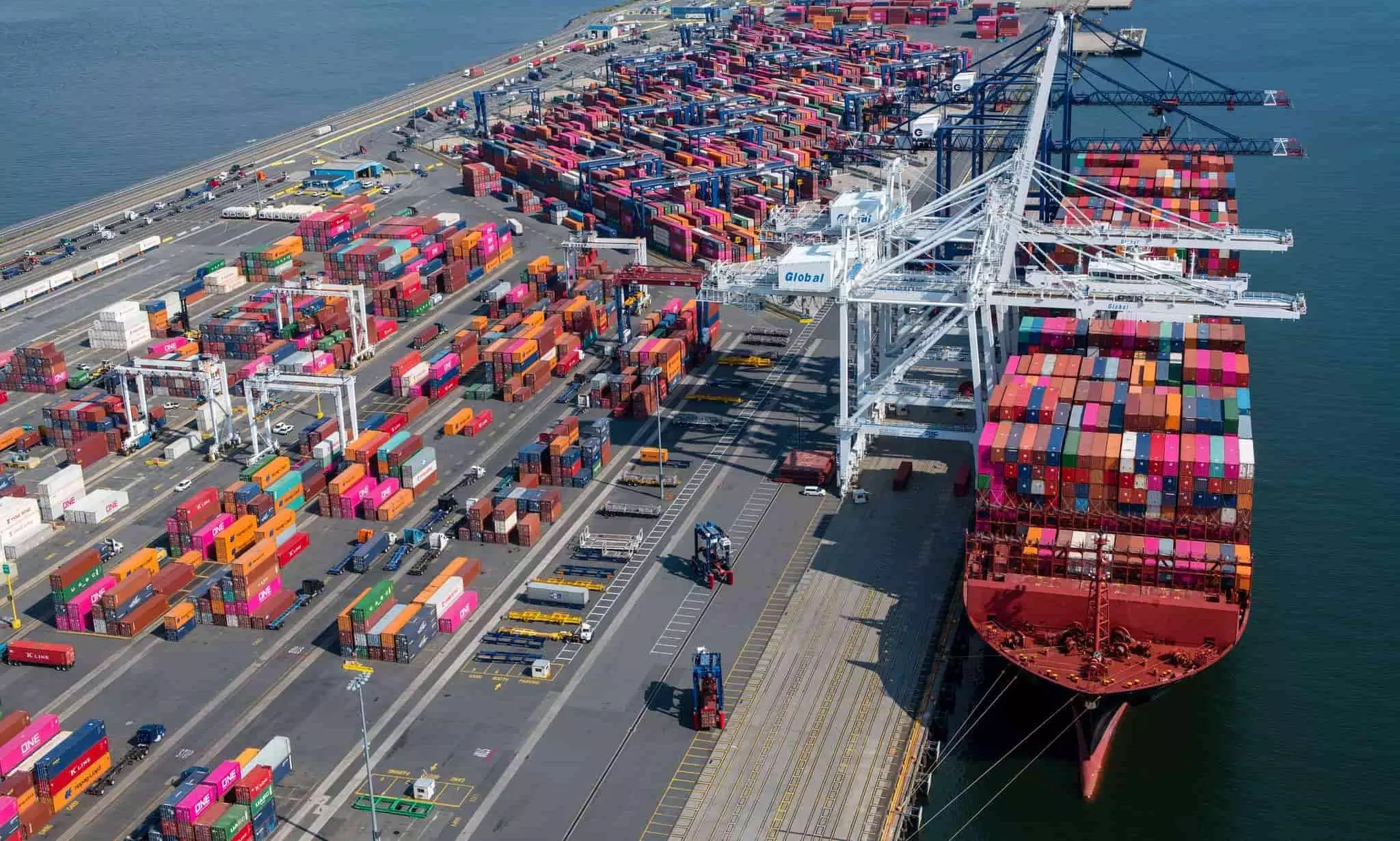US East Coast ports strike will impact supply chain balance
If strike begins on October 1, it is estimated that disruptions could cost the U.S. economy over $1 billion per day.

Cargo dock at the Bayonne Terminal. Photo Credit: Port Authority of New York and New Jersey.
The impasse between the International Longshoremen’s Association (ILA) and the United States Maritime Alliance (USMX) threatens to halt operations at ports from Massachusetts to Texas and cause damage to supply chains and the economy.
"With key East Coast ports such as New York, New Jersey and Baltimore in the crosshairs, the ripple effects could devastate supply chains, consumer markets, and broader economic sectors," says Container xChange in its latest update.
USMX has filed a unfair labour practice (ULP) charge with the National Labor Relations Board (NLRB) against ILA "and requested immediate injunctive relief – requiring the Union to resume bargaining – so that we can negotiate a deal."
"USMX has been clear that we value the work of the ILA and have great respect for its members. We have a shared history of working together and are committed to bargaining."
USMX is a non-profit, representing employers of the East and Gulf Coast longshore industry, and its membership consists of container carriers, marine terminal operators, and port associations.
The ILA, in its response, claims the suit as another publicity stunt by the employer group, "and countered that foreign-owned companies, represented by USMX set up shop at American ports, earn billions of dollars in revenues and profits, take those profits out of country, and fail to adequately compensate the ILA longshore workforce for their labour are engaging in a real unfair labour practice and have been getting away with for decades."
The ILA, with a total membership of 85,000 longshore workers employed at ports on the Atlantic and Gulf Coasts, major U.S. rivers; Great Lakes region, Puerto Rico, Eastern Canada and the Bahamas, added "that USMX should have brought charges against their own members who were unprepared, for exploratory master contract talks with the ILA when the two sides first met over two years ago.
“USMX filing these charges four days before the expiration of the current Master Contract clearly illustrates what poor negotiating partners they have been. If it wasn’t for the ILA engaging in serious and productive negotiations, most of the local agreements would not have been settled over the past year.”
The ILA and USMX have not met face to face since June, and remain far apart on key issues like wage increases and port automation. If the strike happens on October 1, it would be the first national work stoppage by the ILA since 1977.
"What are actually the salary levels of the port workers on the USEC? This is almost impossible to get a good view at, and neither ILA nor USMX have been publishing any meaningful stats as far as I can see," writes Lars Jensen in his LinkedIn post.
"It is, however, interesting to look at the 2019-2020 report from the Waterfront Commission of New York. Given that the current agreement which expires on September 30, 2024 is from 2018, then at least this report should give some insights – keeping in mind that agreed salary increases from 2019-2024 already in the current agreement would not be captured in this report."
What is at stake?
A total of 36 ports are preparing for a complete stoppage if a new deal cannot be agreed with the ILA. “There are ships on the ocean right now carrying billions of dollars of cargo heading to ports on the U.S. East and Gulf Coast," says Peter Sand, Chief Analyst, Xeneta. "These ships cannot turn back and they cannot realistically re-route to the U.S. West Coast. Some may divert to ports in Canada or even Mexico East Coast, but the vast majority will simply wait outside affected ports until the workers return.
“The consequences will be severe, not only through congestion at U.S. ports but importantly these ships will be delayed returning to the Far East for the next voyage. A strike lasting just one week will impact schedules for ships leaving the Far East on voyages to the U.S. in late December and throughout January."
Data from Xeneta shows average spot freight rates on the trade from the Far East to the U.S. East Coast zoomed more than 300 percent between December 1, 2023 and early July this year.
Sand says: “More than 40 percent of total containerised goods enter the U.S. through ports on the East Coast and Gulf Coast, so the stakes could not be higher."
If the strike begins on October 1, it is estimated that the resulting supply chain disruptions could cost the U.S. economy over $1 billion per day, says Container xChange.
"Oxford Economics warns that a prolonged strike could impact up to 100,000 jobs, exacerbating the pressure on businesses already grappling with inflation and the aftermath of previous supply chain crises."
Christian Roeloffs, Co-Founder and CEO, Container xChange says: "The strike could push the container trade into chaos, with ripple effects that potentially will disrupt supply chains well. The congestion and delays at these major ports will severely impact the availability of containers, increase costs, and disrupt schedules. Small traders, in particular, may feel the squeeze as they are more vulnerable to price surges and extended delays in securing and moving their boxes. Businesses are acting now to reroute shipments and secure their container supply, or they risk being left stranded in a congested and costly aftermath.”
With 42 container ships scheduled to arrive at the Port of New York and New Jersey alone in the coming days, any work stoppage could leave cargo stranded in transit, the update added. "Redirecting shipments to West Coast ports or alternate East Coast ports could create a logistical bottleneck, especially for goods requiring passage through the Panama Canal."
Maersk has already announced a disruption surcharge for all cargo moving to and from U.S. East and Gulf Coast terminals, starting on October 21. The surcharge will be $1,500 per TEU and $3,000 per FEU, depending on the extent of the supply chain disruption.
"Even if the strike is short-lived, the backlog of cargo will lead to delays as ports struggle to clear stranded containers."
Proactive strategies
"Reroute shipments where possible, although this may require additional transit time through the Panama Canal or air freight options. It’s essential to explore all available alternatives to avoid delays at East Coast ports.
"For industries like automotive and retail, it’s crucial to prioritise high-value, high-demand products that cannot afford delays. Companies like designer brands have already shifted some of their shipments to air freight despite the higher costs."
The long-term effects of a strike could extend well into 2025, and with major carriers already preparing to impose surcharges on shipments to and from the U.S. East Coast, cost pressures will increase across the board, the update added.
Sand says: “Government intervention should be seen as a strength in the system because it will prevent a dispute between a smaller group of interests – whether that is dockworkers or port terminal owners – from significantly impacting the wealth of the entire nation.
“If the parties cannot solve the dispute themselves, then someone needs to solve it for them because closing the U.S. East and Gulf coasts to trade for a prolonged period of time would be toxic for supply chains and the economy.”


